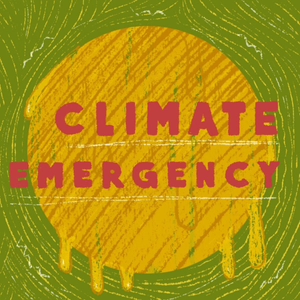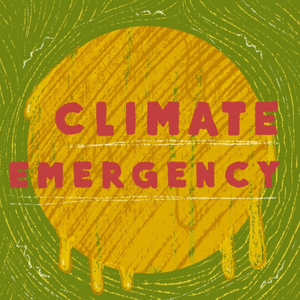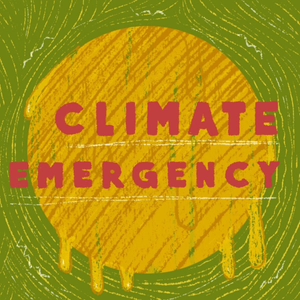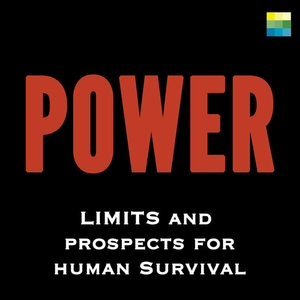
When the Ice Melts Part 2: Climate change impact on Dokriani glacier alters river seasonality
01/30/21 • 19 min
In a recent paper published in the Journal of Hydrology, scientists looked at climate change and their impact on river runoffs in the Dokriani Glacier in the Central Himalaya. To understand the impact of climate change on these glaciers, it was crucial to collect and analyse regional climate data from the field.
It was found, over forty years of data analysis, that the glacier was in steady state before 2000. The temperature changes impact the glaciers, and as a result, the snowmelt and ice melt disappears earlier. This, in turn, impacts the runoff of the river.
Experts also talk about debris cover in this paper. The lower part of the glacier has rocks that come down to the glacier when there is an avalanche. Scientists worldwide say that perhaps this debris cover could prevent the glacier from impacts of climate change. In the last 5-6 decades, glaciers have been losing their mass but the impact of climate change on melting runoff into rivers depends on the local climate. This study quantifies the snow and glacier melt at local conditions and looks at how the river runoff would be impacted in the downstream regions. This would help in planning the water resources and flood risk reduction in the rivers. As farmers heavily depend on these rivers for sowing, and this happens on a very timely basis, this data would help in water management in future.
In this episode, independent environmental journalist Sharada Balasubramanian talks to Smriti Srivastava, a research scholar from the Indian Institute of Technology, Indore, and Mohammad Farooq Azam, a glaciologist and professor from IIT Indore.
Being an editorially independent platform, we rely on you to help us bring in untold stories that have the potential for social change. Do consider supporting us!
See sunoindia.in/privacy-policy for privacy information.
In a recent paper published in the Journal of Hydrology, scientists looked at climate change and their impact on river runoffs in the Dokriani Glacier in the Central Himalaya. To understand the impact of climate change on these glaciers, it was crucial to collect and analyse regional climate data from the field.
It was found, over forty years of data analysis, that the glacier was in steady state before 2000. The temperature changes impact the glaciers, and as a result, the snowmelt and ice melt disappears earlier. This, in turn, impacts the runoff of the river.
Experts also talk about debris cover in this paper. The lower part of the glacier has rocks that come down to the glacier when there is an avalanche. Scientists worldwide say that perhaps this debris cover could prevent the glacier from impacts of climate change. In the last 5-6 decades, glaciers have been losing their mass but the impact of climate change on melting runoff into rivers depends on the local climate. This study quantifies the snow and glacier melt at local conditions and looks at how the river runoff would be impacted in the downstream regions. This would help in planning the water resources and flood risk reduction in the rivers. As farmers heavily depend on these rivers for sowing, and this happens on a very timely basis, this data would help in water management in future.
In this episode, independent environmental journalist Sharada Balasubramanian talks to Smriti Srivastava, a research scholar from the Indian Institute of Technology, Indore, and Mohammad Farooq Azam, a glaciologist and professor from IIT Indore.
Being an editorially independent platform, we rely on you to help us bring in untold stories that have the potential for social change. Do consider supporting us!
See sunoindia.in/privacy-policy for privacy information.
Previous Episode

When the Ice Melts Part 1: Longest field data analyses regional climate change in Chhota Sigri glacier of the Himalaya
In a recent paper published in the Journal of Glaciology, scientists have reported their findings from the longest ever field data from the entire Himalayan range for the first time. Chhota Sigri, a key benchmark glacier or an indicator glacier for the Lahaul-Spiti region in Himachal Pradesh, was studied to understand the effect of climate change. The data looked at various components of the glacier like mass balance, ice velocity, high altitude meteorology, glacier runoff, and their interactions with climate change.
The glacier is losing its ice mass like other glaciers in the world. However, it’s not as bad as previous studies have pointed out.
Also, based on The Intergovernmental Panel on Climate Change (IPCC) report that the Himalayan glaciers would be gone soon, it was found that the glaciers would not really disappear as predicted or talked about. The study revealed that glacier health depends on fluctuations in air temperature but summer-monsoon snowfall plays a key role in maintaining the mass of the glacier. If such summer snowfalls continue to arrive, the glaciers would sustain. Their patterns were analysed over different time periods to understand what could be the possible factors that could drive the glaciers to disappear.
Over the past two decades, there was a significant slowdown inflow of the lower half of the glacier, and this was directly related to glacier mass loss or thickness reduction. However, at the higher altitudes, ice flow didn’t change much, indicating less impact of warming at higher altitudes. The glacier river runoff is tightly controlled by the air temperature, which translates to the fact that a warmer world would likely be associated with higher runoff in the Himalayan rivers.
In this episode, independent environmental journalist Sharada Balasubramanian talks to Arindan Mandal, a PhD student at JNU’s School of Environmental Sciences, and Mohammad Farooq Azam, a glaciologist, and professor at IIT, Indore.
Being an editorially independent platform, we rely on you to help us bring in untold stories that have the potential for social change. Do consider supporting us!
See sunoindia.in/privacy-policy for privacy information.
Next Episode

Generating clean energy from vegetable waste
If you ever visit a vegetable market late in the day you will see mostly rotten vegetables and leftovers thrown around everywhere. Some of it is stored in cold rooms but most of it, unfortunately, ends in dump yards. But one such exception is the Bowenpally market yard in Hyderabad. It got a mention in Prime Minister Modi's Man ki Baat.
In this episode, we talk to Shruti Ahuja director of Ahuja engineering services private limited from Hyderabad who has been instrumental in developing the biogas plant which helps in generating energy with the vegetable waste.
See sunoindia.in/privacy-policy for privacy information.
If you like this episode you’ll love
Episode Comments
Generate a badge
Get a badge for your website that links back to this episode
<a href="https://goodpods.com/podcasts/climate-emergency-107729/when-the-ice-melts-part-2-climate-change-impact-on-dokriani-glacier-al-11337916"> <img src="https://storage.googleapis.com/goodpods-images-bucket/badges/generic-badge-1.svg" alt="listen to when the ice melts part 2: climate change impact on dokriani glacier alters river seasonality on goodpods" style="width: 225px" /> </a>
Copy




